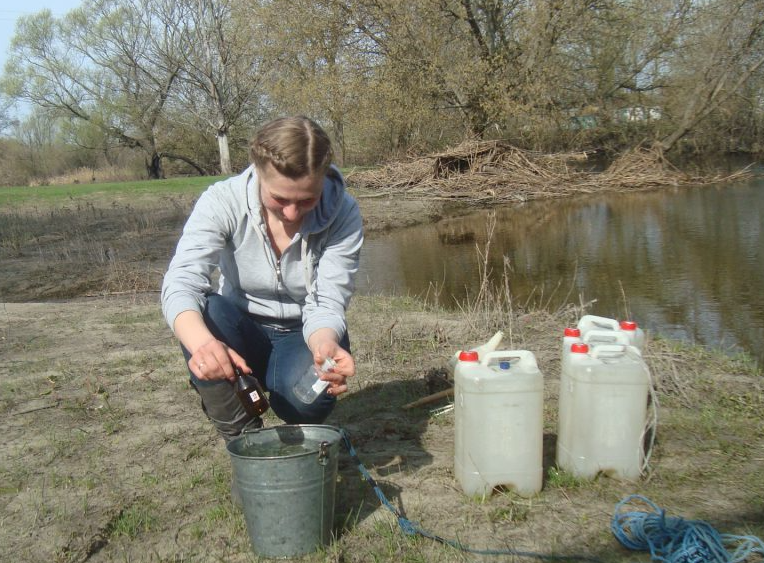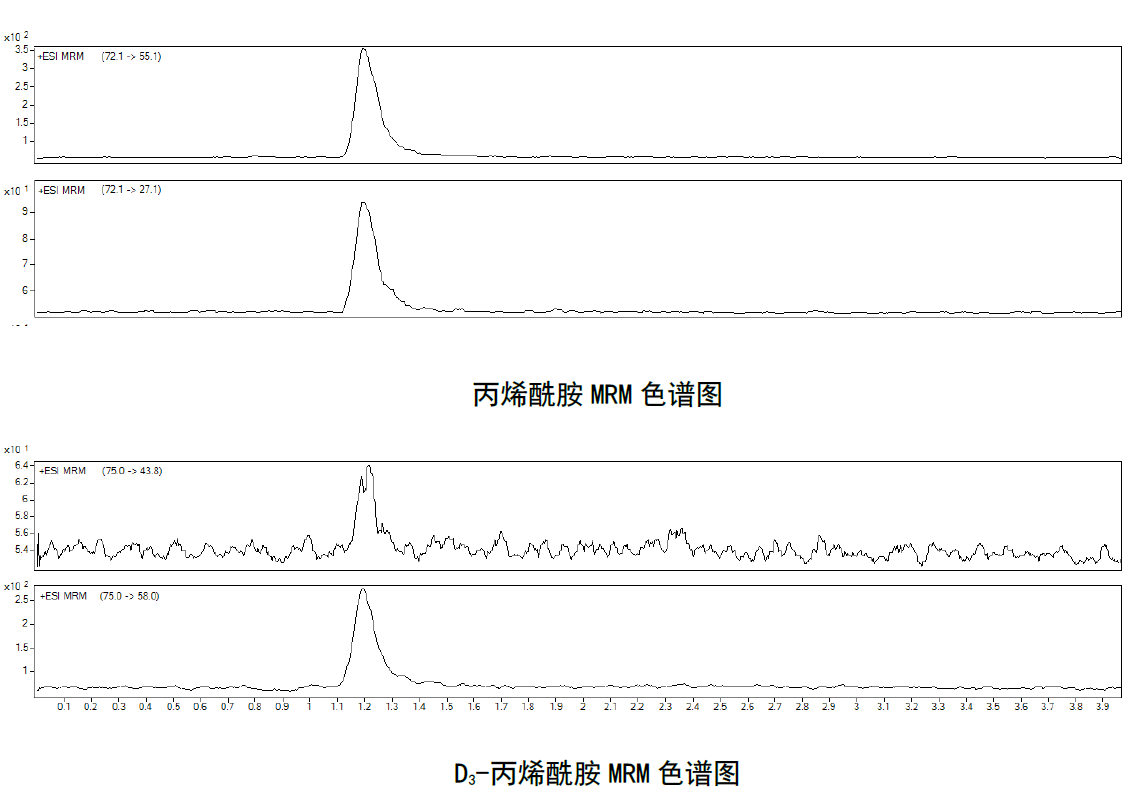The principle of mass spectrometry detection of acrylamide in water is to directly inject the water sample after filtration through a 0.22um filter membrane, and then enter the tandem mass spectrometer after separation by liquid chromatography, using multiple reaction monitoring (MRM) mode. The peaks were qualitatively analyzed, and the internal standard method was used for quantitative analysis. The detection limit of this method was 0.036ug/L, and the lower limit of determination was 0.15ug/L.

Detection reagent
1. Disposable syringe filter: 0.22um, polytetrafluoroethylene (PTFE) material.
2. Disposable syringe: 2.5mL.
3. High-purity water: The water quality should meet the requirements of GB/T33087.
4. Methanol: chromatographically pure.
5. Carrier gas: high-purity nitrogen, purity ≥99.999%.
6. Acrylamide standard solution: 1000mg/L, solvent is methanol, certified reference material.
7. Standard solution of acrylamide isotope (D3-acrylamide): 1000mg/L, solvent is methanol, certified reference material.
8. Standard stock solution of acrylamide: 10.0 mg/L.
Take 1.00 mL of acrylamide standard solution, dilute it with methanol and dilute to 100 mL to prepare 10.0 mg/L acrylamide standard stock solution. Refrigerate below 4°C and keep away from light.
9. D3-acrylamide standard stock solution: 10.0 mg/L.
Take 1.00 mL of LD3-acrylamide standard solution, dilute with methanol and dilute to 100 mL to prepare 10.0 mg/LD3-acrylamide standard stock solution. Refrigerate below 4°C and keep away from light.
10. Acrylamide standard solution: 10.0ug/L.
Take 100uL acrylamide standard stock solution, dilute it with high-purity water and dilute to 100mL to prepare 10.0ug/L acrylamide standard solution.
11. D3-acrylamide standard solution: 10.0ug/L.
Take 100u of LD3-acrylamide standard stock solution, dilute it with high-purity water and dilute to 100mL to prepare 10.0ug/LD3-acrylamide standard solution.
Instruments required for testing
1. Liquid chromatography-tandem mass spectrometer: equipped with electrospray ion source.
2. Chromatographic column: C18 chromatographic column or other chromatographic column with equivalent performance.
3. Sample bottle: 2mL.
4. Volumetric flasks: 100mL and 10mL.
5. Sampling bottle: brown glass bottle with glass stopper.
6. Micro syringe: 1000uL.
Water sample collection and preservation method
The water samples were refrigerated and stored below 4 °C after collection, and the water samples were filtered and tested within 24 h. If residual chlorine is present in the water sample, add ascorbic acid to remove residual chlorine.
water sample preparation
The water sample was filtered through a disposable syringe filter, the water sample was taken into a 10mL volumetric flask, 400uLD3-acrylamide standard solution was added, and the water sample was adjusted to the mark. Placed in a sample vial to be tested. If the concentration of the water sample is high or the matrix is complex, the water sample can be appropriately diluted and then filtered through a disposable syringe filter. Substitute laboratory grade pure water for the sample and prepare a blank sample following the same procedure as the sample preparation.
Detection steps
Chromatographic analysis conditions
1. Mobile phase: A phase - methanol, B phase - water, A:B=10:90 (V:V), isocratic elution.
2. Flow rate: 0.3 mL/min.
3. Column temperature: 30°C. 4. Injection volume: 10uL.
Mass spectrometry conditions
1. Ion source: Electrospray ion source, positive ion mode.
2. Ion source temperature: 350 °C.
3. Scanning method: MRM, multiple reaction monitoring conditions refer to the following figure

Plotting the calibration curve
1. This method uses the internal standard method for quantification.2. Preparation of calibration series: Take five 10 mL volumetric flasks, accurately add 200uL, 500uL, 1 000uL, 1 500uL and 2 000uL acrylamide standard solution and 400uL D3-acrylamide standard solution with a micro syringe, and use high-purity water. Make up to the mark and prepare a series of calibration curves with concentrations of 0.20ug/L, 0.50ug/L, 1.00ug/L, 1.50ug/L and 2.00ug/L. Available now.
3. Inject samples in order from low to high mass concentration, take the ratio of the concentration of the target component in the standard series solution to the concentration of the internal standard as the abscissa, and the ratio of the corresponding peak area to the peak area of the internal standard as the vertical. Coordinates to create a calibration curve.
water sample testing
1. Use the autosampler to inject the sample, and the injection volume is 10uL.2. Follow the same procedure as the calibration curve plotting to measure the sample.
3. The MRM chromatograms of acrylamide and D3-acrylamide are shown in the relevant charts.

Qualitative results
Qualitative analysis was performed based on retention times and characteristic ion pairs in the MRM chromatograms of acrylamide and D3-acrylamide.Quantitative results
Calculate the content of the components in the sample according to the calculation formula, and the result is expressed in micrograms per liter (ug/L). The quantitative transition of acrylamide is 72.1>55.1, and the quantitative transition of D3-acrylamide is 75>58. The retention of the number of digits in the determination result is consistent with the lower limit of determination, with a maximum of three significant digits.The above content comes from "DB37/T 4145-2020 Water Quality Determination of Acrylamide Liquid Chromatography-Tandem Mass Spectrometry"
<



